Featured Articles
LATER, GATOR: Bodzianowski Had One Leg, & One Big Heart
Hey, did you hear the one about the one-legged fighter?
Craig “Gator” Bodzianowski, the former cruiserweight who, against all odds, actually did fight much of his professional career with an artificial limb, never really considered the accident that left him an amputee to be a joking matter. But he defused any and all criticism of his desire to continue his boxing career with self-deprecating humor, which was his standard defense against those who would have prevented him from chasing his dream of becoming a world champion.
Bodzianowski, who compiled a 31-4-1 record with 23 victories inside the distance (he was 13-0 with 11 knockouts after the 1984 motorcycle accident that resulted in the loss of his right leg below the knee) – was just 52 when he died in his sleep this past weekend at his suburban Chicago home. Asked in November 1988 why he never filed a lawsuit against the driver of the automobile that crashed into him and left his leg mangled beyond reasonable repair, Bodzianowsk replied, “I can’t go to court. I won’t have a leg to stand on.”
Drum roll, please.
Comments such as those, delivered with a smile and a wink that were noticeably absent when the power-punching brawler stepped inside the ropes, defused much of the controversy that involved a ring comeback that was unprecedented and surprisingly successful. Bodzianowski so overcame his handicap that he became a world-rated cruiserweight, eventually gaining a shot at WBA cruiserweight champion Robert Daniels on July 19, 1990. And although the fact Daniels broke one of Bodzianowski’s ribs in the second round of the bout staged in the Seattle Kingdome, and later closed the challenger’s right eye with a ripping shot that landed flush, it was the never-say-die “Gator” who seemed to be coming on in the later rounds. Daniels retained his title a clear unanimous decision, but Bodzianowski gained even more admirers with his typically gutty performance.
Not that everyone agreed that Bodzianowski, a handsome man who bore a facial resemblance to actor Michael Rooker, should have even been swapping big shots with so accomplished an opponent as Daniels – or with anyone, for that matter.
Dr. Ferdie Pacheco, Muhammad Ali’s onetime personal physician and later a boxing analyst for NBC Sports, went on television to rip the Illinois commission for granting a license to Bodzianowski to fight again in December 1985, just 19 months after the accident that took his leg.
“If this young man should be severely injured in this sport, where would the commission go hide to avoid the rain of censure falling on its head,” Pacheco told his audience. “The hue and cry, `Ban boxing,’ would be heard throughout the land, and I might be the guy to lead it.”
But the five-member Illinois Athletic Commission, with some reservations, reinstated Bodzianowski’s license after he was examined by what was termed “five or six” doctors who all agreed that he had regained sufficient mobility with his new prosthesis that he could box with no more risk than that involving any fighter. That opinion was seconded by Dr. Louis van de Beek, one of three Pennsylvania Athletic Commission physicians who examined Bodzianowski before he took on Dawud Shaw on Nov. 26, 1988, in Philadelphia.
“The young man’s adaptation to the artificial limb, in terms of agility, in terms of stability and in terms of being sensitive to feeling to the prosthesis, is quite remarkable,” van de Beek said at the time. “There should be no reason he shouldn’t be given medical clearance to fight in Pennsylvania.”
Bodzianowski himself said that, in terms of the way he fought, there wasn’t much difference between his pre- and post-accident self. He was always a straight-ahead, bop-’til-you-drop banger, not some fancy-stepping technician.
“Let’s face it, there’s a little notoriety there,” he said of the curiosity factor attendant to his infirmity. “I know some people come to see me because they regard me as some sort of a freak. But I’ve basically adopted the position that I don’t care what people say as long as they spell my name right. Hey, I was never that graceful when I had two good legs. I sort of shuffled side to side.”
Bodzianowski’s upbringing probably prepared him, better than most, for the monumental test that the accident imposed on his mind and spirit. He had been a commendable 62-5 as an amateur, which should not have come as a surprise when you consider that his father, Pat Bodzianowski, was a former fighter who taught his four sons (and two daughters) the virtues of toughness and self-reliance. How many kids grow up a stone’s throw from Chicago in a residence whose back yard housed a menagerie of baboons, pigeons, goats, chickens, snakes and, yes, even an alligator. Oh, yes, there also were piranhas in the family’s large aquarium in the den.
One of Bodzianowski’s brothers, Billy, died when he accidentally was shot. But the Bodzianowskis banded together even tighter after that tragedy, which helped prepare Craig for the ordeal that defined his remarkable life.
“Courage is a man and a woman,” he said on Jan. 30, 1989, the night he received the Most Courageous Award at the 85th annual Philadelphia Sports Writers Association Awards Dinner. “It’s a marriage, six children, four grandchildren, the death of one son, the loss of a leg to another. To survive that is courage. So I accept this on behalf of my definition of courage. To my mom and dad, Gloria and Pat Bodzianowski.”
The Bodzianowskis were a unique bunch, without question. Although it might be assumed that Craig took his nickname, “Gator,” from the family reptile, the real explanation was even more intriguing. Those Lacoste polo shirts so in favor at the time, the ones with the little alligator (all right, so it actually is supposed to be a crocodile) embroidered on the left side, were too expensive for Pat and Gloria to buy in multiple colors for four sons. So Pat – who became a tattoo artist and taxidermist after he hung up his gloves – inked the iconic symbol on Craig’s chest. Gloria then cut little rectangles out of cheaper Ban-Lon shirts, exposing the tat that became her boxing son’s most singular mark of identification, at least until he was fitted with his prosthesis.
But it wasn’t a nickname or a tattoo that set Craig Bodzianowski apart. It was his steely determination to prove everyone wrong when they said he couldn’t possibly fight again after being so horribly injured.
Only 12 days earlier, Bodzianowski had scored a 10-round, unanimous decision over Francis Sargent. He was operating his Kawasaki 440 at a reasonable speed, 15 mph, when a parked car sudden pulled ahead of him and attempted a U-turn and smashed into him.
What is ironic is that Bodzianowski had intended to sell the motorcycle, because he knew that riding it could be dangerous. In the ring, both fighters have something akin to an even chance, but motorcycle vs. car is akin to Mike Tyson vs. Don Knotts. The guy on the chopper always loses.
“I knew it was bad,” Bodzianowski recalled before his 1988 matchup with Shaw. “I just didn’t know how bad it was.”
It was this bad: four compound fractures below the right knee and numerous broken bones, cuts, scrapes and abrasions. Bodzianowski’s companion, Elizabeth Anderson, walked away with nothing more than a few minor bruises.
Rushed to Olympia Fields (Ill.) Osteopathic Medical Center, Bodzianowski underwent nine hours of surgery in a futile attempt to save his leg.
“I was told by the doctors that if they did save it, and it was by no means a certainty, I’d have to undergo many operations and that I’d have to walk with a cane the rest of my life,” he recalled. “They also said that the leg could be amputated right away and I could be fitted with a prosthesis. In either case, they said I never would be able to box again.”
Bodzianowski elected amputation, even though he was advised that, with an artificial limb, he could expect to regain no more than 70 percent of his previous mobility. He figured that if he worked hard enough during the rehabilitation process, he could get back to 90 or 95 percent of what he had been. And he did just that, in part because of his refusal to quit on himself and in part because of an advance in prosthesis technology that led to something called the “Seattle Foot.”
“Somebody once said, `Anything the mind can conceive and believe, man can achieve,’” Bodzianowski said. “And it’s true. The mind is an amazing thing.
“I never, ever say, `Darn, if I had my real (leg), I could have been on top a long time ago.’ I may have. But I don’t look back on that, ever. Not one time. Because I kick ass the way I am now.”
He kicked enough of it not only to get that Most Courageous Award from the Philadelphia Sports Writers Association – an honor which also has been conferred upon, among others, golfer Ben Hogan, former Pittsburgh Steeler running back Rocky Bleier and baseball’s Mickey Mantle and Tommy John – that he became the subject of a book, “Tale of the Gator: The Story of Craig Bodzianowski,” by author Mike Fitzgerald, and a documentary, “On the Ropes.”
There are other inspiring tales of athletes who have physically overcome as much, or nearly so, as Bodzianowski. South African sprinter Oscar Pistorius had both legs amputated below the knee when he was just 11 months old, yet he went on to compete, on artificial limbs, in the 400 meters and 4×400 meters relay at the 2012 London Olympics. But Pistorius’ feel-good story took an ugly turn when, on Feb. 14 of this year, he was charged with the murder of his girlfriend.
Even in death Bodzianowski continues to be an inspiration to others who face challenges that probably seem insurmountable. He didn’t set out to be a role model in that way, but then we all are faced to play the hand that life deals us.
“When I see other people with problems, I just thank God that I have what I have, that I was so lucky and fortunate,” Bodzianowski, a devout Catholic who had an audience with Pope John Paul II (the boxer and the Pontiff, pictured above) in 1986, said at the Pennsylvania Sports Writers Association Awards Dinner where he was recognized for his courage in overcoming adversity. “There are people with the same injuries as me who can’t really move around all that well. So I’m one of the lucky ones. I look at what I have to work with, and try to put it together the best I can.”
Rest in peace, Gator. Here’s hoping that part of you that was taken here on Earth can be restored on the other side of eternity’s divide.
-

 Featured Articles3 weeks ago
Featured Articles3 weeks agoThomas Hauser’s Literary Notes: Johnny Greaves Tells a Sad Tale
-
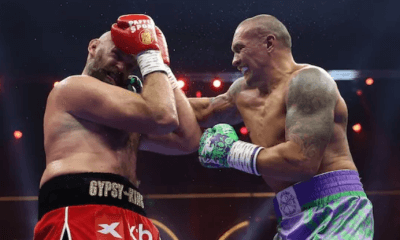
 Featured Articles2 weeks ago
Featured Articles2 weeks agoBoxing Notes and Nuggets from Thomas Hauser
-
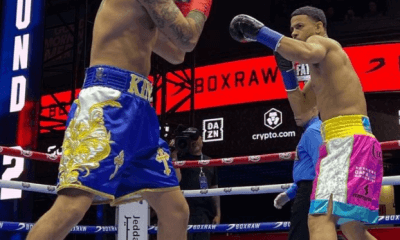
 Featured Articles4 weeks ago
Featured Articles4 weeks agoRolly Romero Upsets Ryan Garcia in the Finale of a Times Square Tripleheader
-
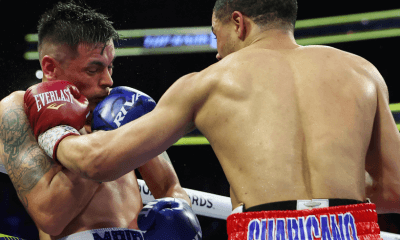
 Featured Articles4 weeks ago
Featured Articles4 weeks agoUndercard Results and Recaps from the Inoue-Cardenas Show in Las Vegas
-
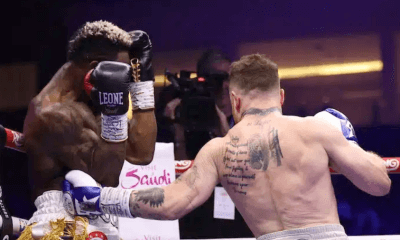
 Featured Articles4 weeks ago
Featured Articles4 weeks agoCanelo Alvarez Upends Dancing Machine William Scull in Saudi Arabia
-
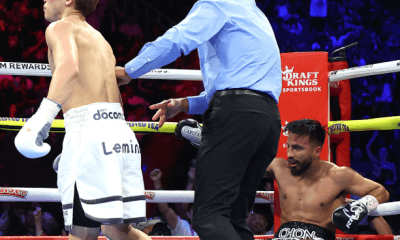
 Featured Articles4 weeks ago
Featured Articles4 weeks agoBombs Away in Las Vegas where Inoue and Espinoza Scored Smashing Triumphs
-
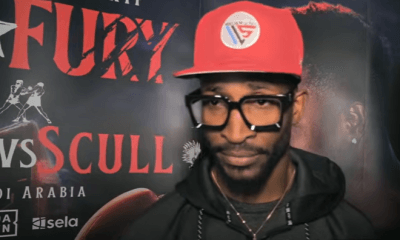
 Featured Articles4 weeks ago
Featured Articles4 weeks agoArne’s Almanac: The Good, the Bad, and the (Mostly) Ugly; a Weekend Boxing Recap and More
-
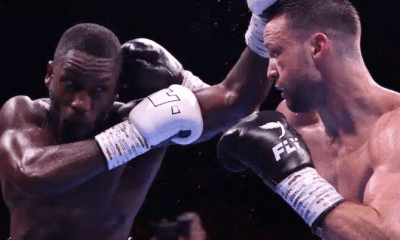
 Featured Articles1 week ago
Featured Articles1 week agoEkow Essuman Upsets Josh Taylor and Moses Itauma Blasts Out Mike Balogun in Glasgow




















Pingback: Películas de boxeo que esperamos ver: argumentos sugeridos por más de 50 expertos | Solo Boxeo